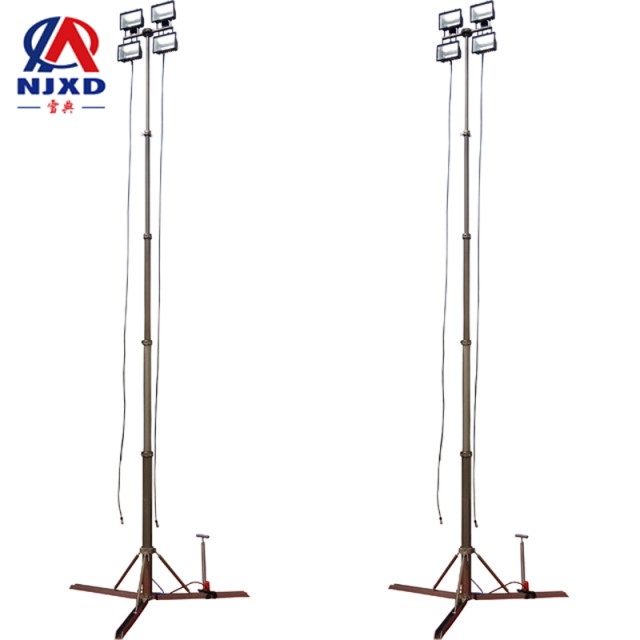NEWS
Physical unit of luminous flux for lifting lighting
Time:2021-03-16 View:

luminous flux (luminous flux) refers to the radiation power that human eyes can feel, which is equal to the product of the radiation energy of a certain band and the relative visual rate of the band per unit time. Because human eyes have different relative visual acuity of light of different wavelengths, when the radiation power of light of different wavelengths is equal, the luminous flux is not equal.
Basic interpretation
Luminous flux refers to the derived amount of radiation flux evaluated according to the international standard human visual characteristics, expressed by the symbol Φ (or Φr). The relationship between luminous flux and radiant flux is  that Km is the maximum value of spectral apparent efficiency, equal to 683lm/W;V (λ) is the international lighting commission (CIE) the specified standard spectral apparent efficiency function; Φeλ is the spectral density of radiation flux. The unit of luminous flux is lm (lumen); Λ is the apparent efficiency of spectral light. 1lm is equal to the luminous flux emitted by a point light source with uniform luminous intensity of 1cd (Khandra) in 1sr (steradian) unit solid angle, that is, 1 lm = 1 cd · sr. The nominal luminous flux of a 40W ordinary incandescent lamp is 360lm, the nominal luminous flux of 40W fluorescent lamp is 2100 lm, while the luminous flux of 400 W standard high pressure sodium lamp can reach 48000 lm.
that Km is the maximum value of spectral apparent efficiency, equal to 683lm/W;V (λ) is the international lighting commission (CIE) the specified standard spectral apparent efficiency function; Φeλ is the spectral density of radiation flux. The unit of luminous flux is lm (lumen); Λ is the apparent efficiency of spectral light. 1lm is equal to the luminous flux emitted by a point light source with uniform luminous intensity of 1cd (Khandra) in 1sr (steradian) unit solid angle, that is, 1 lm = 1 cd · sr. The nominal luminous flux of a 40W ordinary incandescent lamp is 360lm, the nominal luminous flux of 40W fluorescent lamp is 2100 lm, while the luminous flux of 400 W standard high pressure sodium lamp can reach 48000 lm.
Optical apparent efficiency is the quotient of luminous flux and corresponding radiation flux, in lm/W. For composite radiation, its symbol is K,K = Φ/Φe. The light apparent efficiency symbol of monochromatic radiation with wavelength λ is K(λ), which is called spectral light apparent efficiency, that is  , Km in the formula is the maximum value of K(λ), it is called the maximum spectral apparent efficiency. According to the average results measured by national metrology laboratories in various countries, under the condition of bright vision, Km is located at the frequency of 540 × 101Hz (λ = 555 nm). In 1977, the international Metrology Committee adopted the maximum spectral apparent efficiency Km = 683 lm/W of monochromatic radiation with a frequency of 540 × 10Hz. Under the condition of ANSHIJUE, K′ m = 1754 lm/W.
, Km in the formula is the maximum value of K(λ), it is called the maximum spectral apparent efficiency. According to the average results measured by national metrology laboratories in various countries, under the condition of bright vision, Km is located at the frequency of 540 × 101Hz (λ = 555 nm). In 1977, the international Metrology Committee adopted the maximum spectral apparent efficiency Km = 683 lm/W of monochromatic radiation with a frequency of 540 × 10Hz. Under the condition of ANSHIJUE, K′ m = 1754 lm/W.
Spectral light apparent efficiency function is also called visual function. It is the ratio of two radiation flux with the same wavelength as λ m and λ under specific luminosity conditions, expressed by the symbol V(λ). Lambda m is selected at the point where the maximum ratio is equal to 1. Under bright visual conditions (adaptive brightness is greater than several Khandra per square meter),λ m = 555 nm, at this time V(λ)= 1. The standard value of photopic vision V(λ) published by the international lighting commission (CIE) in 1971 was approved by the international metrology Commission in 1972 (see figure). Under the condition of ANSHIJUE (adaptive brightness less than 0.01 cd/m), the spectral apparent efficiency function is expressed by the symbol V' (λ), and its maximum position moves towards the short wave direction, when λ'm = 507 nm, v' (λ)= 1. The V' (λ) curve in the figure is recommended in CIE1951.

Physical unit
The unit of luminous flux is "Lumen". Optical Flux is usually expressed by Φ. Theoretically, its unit is equivalent to electrical unit watt, because vision is still related to light color. Therefore, according to the standard light source and normal vision measurement unit, "Lumen" is adopted, Symbol: lm.
1. Luminous flux is the intensity of light that arrives, leaves, or passes through the curved surface per unit time.
2. Luminous flux is the ratio of light emitted by the bulb.
Lumen (lm) is the luminous flux unit of International unit system (SI) and American unit system (AS). If the light is used as the particle (I .e. photon) passing through the space, the luminous flux of the beam reaching the curved surface is proportional to the number of particles hitting the curved surface within one second interval.
The physical expression of luminous flux is: 
In the formula: K: photosensitivity, sensitivity (analogy: Sensitivity of film), human eye's perception of color K = 683.002 lm/W. The K value unifies the unit of luminous flux and the unit of radiant power.
Λ: Wavelength. In fact, human eyes only respond to visible light whose wavelength is between 380nm and 780nm. Traditionally, we call light waves below 380nm Ultraviolet (Ultraviolet, UV for short), the light wave above 780nm is called Infrared (Infrared, IR for short), which is also reflected in the visual function V(λ).
V(λ): it is called the relative spectral sensitivity curve of human eyes and is also used as the visual function curve, which is obtained by summarizing many testing experiences for human eyes, it describes the response strength of human eyes to light of different wavelengths.
